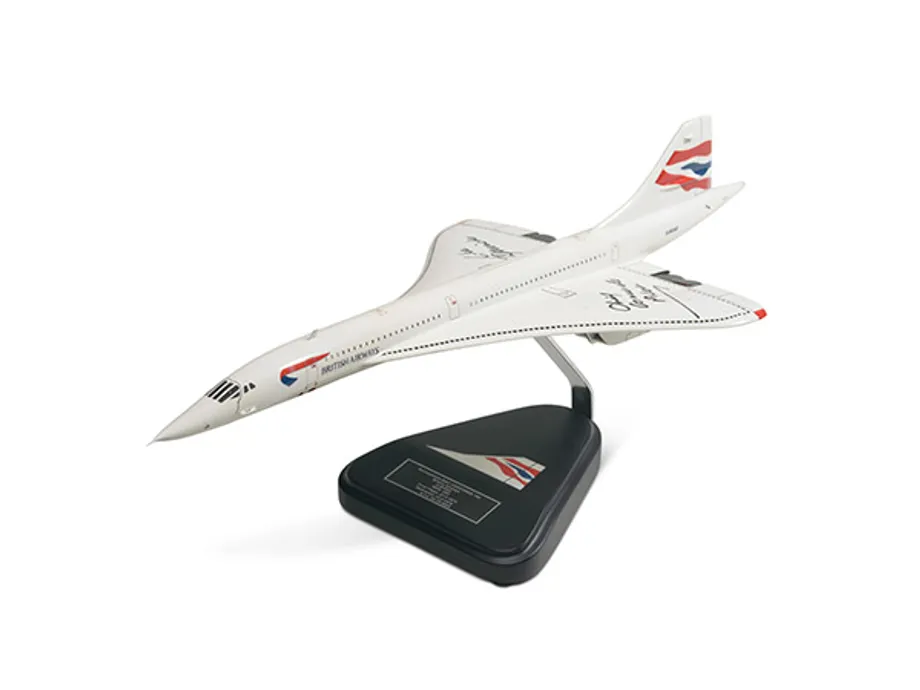Aviation
Aviation is the practical aspect of aeronautics, being the design, development, production, operation and use of aircraft.
The most widely accepted date for the earliest powered, heavier-than-air flight, is 17 December 1903 by the Wright Brothers who were the first to fly in a powered and controlled aircraft, rather than a glider (control but no power) or free flight (power but no control).
Aircraft began to transport people and cargo as designs grew larger and more reliable. The Wright Brothers took aloft the 1st passenger, Charles Furnas, one of their mechanics, 14 May 1908.
Model of Concorde
Concorde was jointly developed and produced by Arospatiale and the British Aircraft Corporation (BAC) under an Anglo-French treaty. It is a turbojet-powered supersonic messenger jet airline that was in service from 1976 to 2003.
Concord is one of only two supersonic transports to have entered commercial service the other was the Tupolev Tu-144 and it featured a maximum speed over twice the speed of sound at Mach 2.04.
This model of Concorde has been signed by Captain Mike Bannister, the last Chief Concorde Pilot, who retired in 2003 along with Concorde.
Donated by Concorde Club

